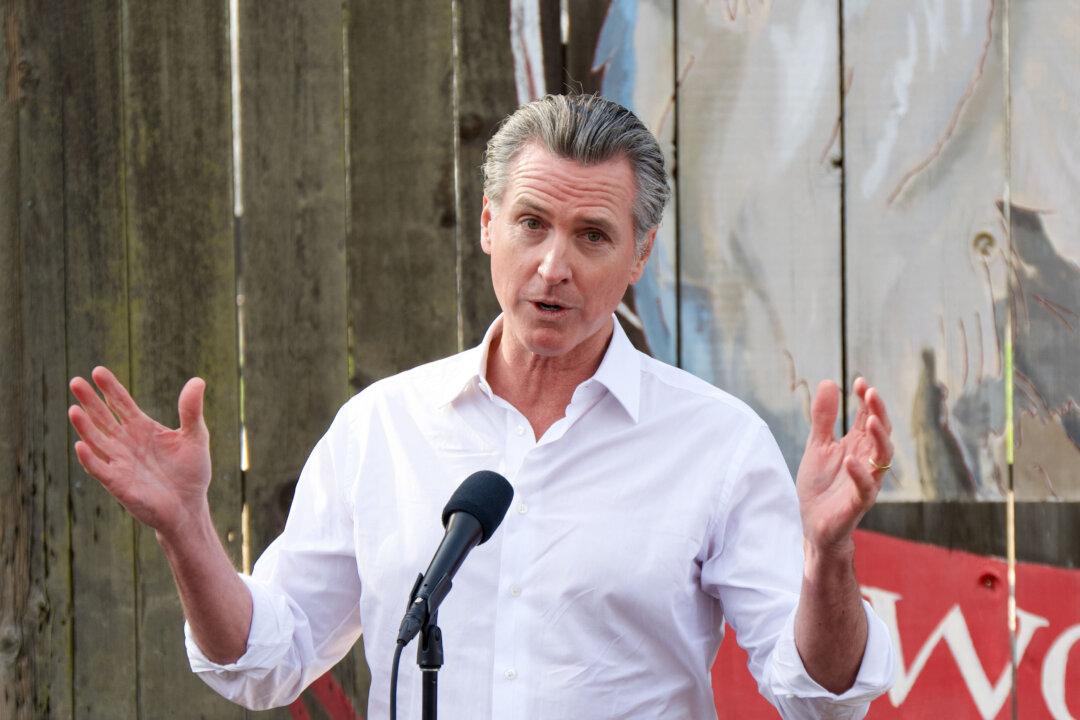Analysts say Californians could be paying significantly more for gasoline with the impending closure of two Phillips 66 refineries in Los Angeles, which account for about 8 percent of the state’s oil refining capacity, by the end of 2025.
Before the refiners made their announcements, the California Energy Commission had proposed that the state take over oil refineries to try to mitigate price hikes.
However, industry experts have pushed back on the idea, saying it would be risky and impractical.
Valero’s closure would leave California with seven refineries. Combined, the Valero and Phillips 66 refineries account for nearly one-fifth of the state’s gasoline supply.
California Versus ‘Big Oil’
Since 1995, Californians have typically paid around 13 percent more on average for gasoline than the rest of the nation, according to a March 16 University of Southern California study on gas prices by Michael Mische with the USC Marshall School of Business.However, in recent years, the difference has increased dramatically. Gas prices in the state are currently $1.68 per gallon above the U.S. average of $3.16. According to the USC study, on a recent day in March, many California locations ranged from more than 50 percent to nearly 90 percent above the national average.
“For decades, oil companies have gotten away with ripping off California families while making record profits and hiding their books from public view,” Newsom said at a press conference at the time. “California leaders are ending the era of oil’s outsized influence and holding them accountable.”
However, the University of Southern California study found that state policies, not oil and gas companies, have caused high gas prices. “California refiners have not engaged in widespread price gouging, profiteering, price manipulation, ‘unexplained residual prices’ or surcharges, magical or otherwise,” said the study.

Researchers also predicted gas prices will rise when the Phillips 66 refineries close and that it’s “doubtful that demand will drop.”
“To compensate for the closure of the Phillips 66 refinery, California will most likely have to increase its imports of California-compliant gasoline, which is costly, and surviving refineries may have to increase capacity utilization,” the study found.
Oil Industry Responds
California’s proposal for a takeover of oil refineries stated: “The State would operate a market independent source of production which would eliminate potential market manipulation.”The California Energy Commission has held hearings to explore this proposal and others, and officials who are learning how complex the oil refinery industry is now have more questions than answers, Reheis-Boyd said.
The state will need to decide whether its refineries would operate based on profit margins or absorb losses to store more gas in tanks at oil refineries so that when gas prices spike, the state could release more fuel on the market, she said.

The number of refineries in California has dropped from 40 in 1980 to nine, not including the impending Phillips 66 closure, Reheis-Boyd said.
There are no refineries for sale in California, and “no one is going to build another one,” Reheis-Boyd said. “They’re not selling the refinery; they are closing it.”
California is considered an “energy island” with no pipelines crossing the Sierra Nevada, she said.
‘Expensive Lesson’
Skip York, chief energy strategist at energy consultant Turner Mason & Co., told The Epoch Times the state is considering owning refineries and other proposals as a way to guarantee a stable supply of gasoline.Neither the state nor consumers can afford to lose any refineries, which would cause a supply crunch and a spike in gas prices, York said.
“Demand isn’t going to drop ... so you’re going to have to supply that demand another way,” he said.
He said he hasn’t ruled out the idea that if the state owned refineries, officials could decrease gas supplies and raise prices to compel more people to move into electric vehicles.
“You can’t dismiss that possibility,” he said. “There is nothing that says the state couldn’t do that.”

Lindsay Buckley, a spokeswoman for the California Air Resources Board, denied the state has plans to deliberately drive up the cost of gasoline so that more people buy electric vehicles.
“This is unequivocally false,” she said in an email to The Epoch Times. “California is dedicated to ensuring a reliable supply of affordable and safe transportation fuels during the transition to zero-emission vehicles.”
Buckley said the electric vehicle market remains strong, with one in four Californians choosing to buy zero-emission models over gas-powered cars for the last two years, she said.
From 2021 to 2023, the market saw more than 40 percent year-over-year growth, and while growth remained relatively unchanged in 2024 compared to 2023, sales for gas-powered vehicles declined by 1 percent at the same time, she said.
California plans to phase out the sale of all new gasoline-powered cars by 2035.
Price Blame
Mike Umbro, an energy consultant who owns Premier Resource Management and runs a nonprofit organization called Californians for Energy and Science, which studies energy, environment, and economics, told The Epoch Times that the state takes in more revenue from gas sales than oil companies make in profit.
Umbro said Newsom and some Democratic lawmakers are “ripping off” people at the pump while blaming Big Oil for gouging consumers.
Umbro believes reopening California’s oil fields and cutting imports could save $30 billion and save good-paying American jobs.
Daniel Villasenor, a spokesman for the governor, said in an April 14 email to The Epoch Times that in the two years since Newsom signed “California’s gas price gouging law,” the state has avoided severe gasoline price spikes, “saving Californians billions of dollars at the pump.”
The law established a state-level independent petroleum watchdog to hold Big Oil accountable, Villasenor said in the email.
“Governor Newsom has done more than any other Governor in recent history to tackle the challenge of rising gas prices—despite what the oil industry and its allies say,” he said.







